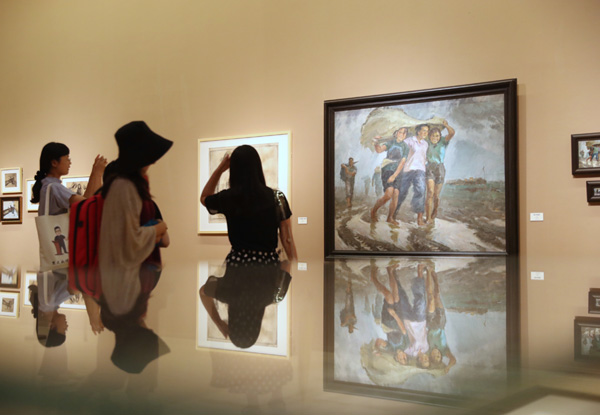 |
|
Inscribe the Times, an ongoing exhibition at the National Art Museum of China, reviews Tang Xiaoming's exploration with oil painting. [Photo by JIANG DONG/CHINA DAILY] |
"Tang also indicates Lu Xun's sharpness by depicting his hands, which, on one level, look thin and reveal his deteriorating physical condition. But on another level the fact that the writer is holding a pen shows his determination to continue writing and address social problems."
Shang adds that the calm, gloomy palette of the painting adds an air of seriousness and depression that reinforces Lu Xun's character and the social circumstances he is confronted with.
The exhibition also gathers together other iconic works by Tang, including Passion, a portrait of the Canadian physician Norman Bethune, and Let Wisdom Shine, a portrait of the noted geologist Li Siguang, both from the collection of the National Art Museum of China.
Li Jingkun, chairman of the Guangdong Artists Association, says Tang's creation reflects his individual efforts to firmly plant oil painting, an art form introduced from Europe, in the soil of Chinese culture.
Tang was educated in Guangzhou, one of the first places in China where oil painting was introduced and taught by European missionaries during the 16th century.
Li says Tang has inherited a tradition from his predecessor artists native to Guangdong, who went to Europe to study oil painting in the early 20th century. He later adopted a style of realism prominent in the former Soviet Union at the time, but he also endeavored to open up a path to make oil painting serve the needs of ordinary Chinese.
Tang says: "I believe life is an infinite source of inspiration. Life and nature are always far too diverse and mysterious for people to comprehend. They are of such a great depth that artists will never tire of trying to understand or find inspiration in them."